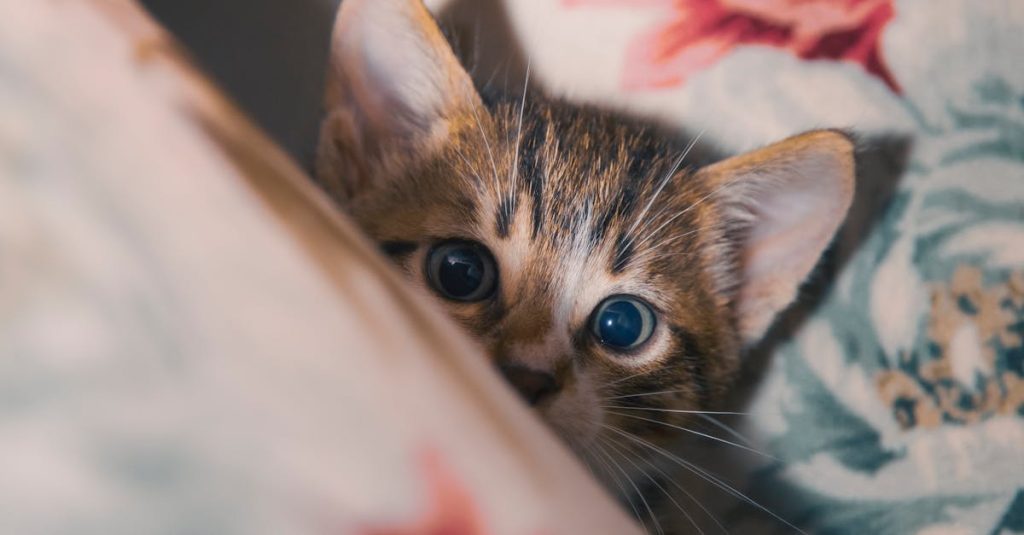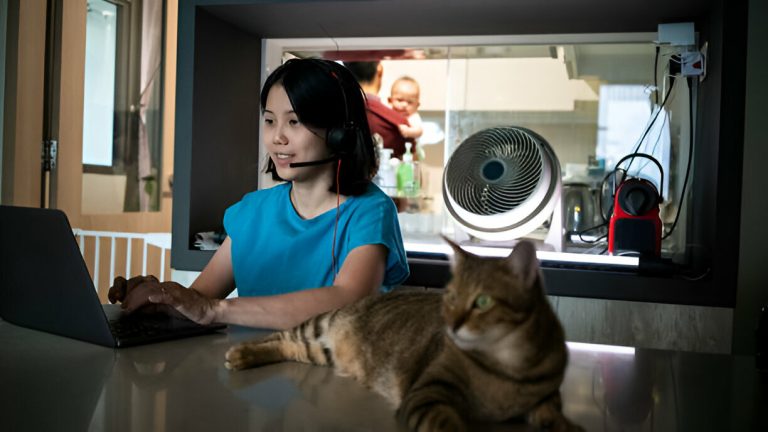Zeniquin for Cats: An Effective Antibiotic Treatment Option

Zeniquin, with the active ingredient marbofloxacin, belongs to a class of broad-spectrum antibiotics known as fluoroquinolones. Cats, who notoriously conceal their illnesses with a stoic grace akin to the silent film stars of yesteryear, can benefit from Zeniquin’s efficacy in treating a variety of bacterial infections. At a molecular level, marbofloxacin inhibits the bacteria’s DNA gyrase, an enzyme critical for their replication and survival, rendering the offending organisms as ineffective as a catnip mouse in the paws of a real rodent hunter.
One might not often associate the word elegance with antibiotics, yet Zeniquin’s dosage regimen offers just that. Administered once daily, the convenience it offers is akin to a feline landing gracefully on its feet, every time. This ease of dosing reduces the stress on both the furred patient and their human companion. Moreover, Zeniquin’s ability to penetrate into various tissues makes it an effective treatment for skin infections, urinary tract infections, and respiratory infections among other maladies in cats. The antibiotic’s specificity and potency ensure that the nefarious bacteria receive a tactical strike of medicinal prowess.
As we continue to brush along the sleek coat of this topic, the forthcoming paragraphs will delve into the nuances of Zeniquin’s administration and dosing for our feline friends. We’ll sidestep the jargon-drenched swamp of medical discourse and prance lightly into the practical considerations: how to ensure your cat receives their treatment with the least fuss and the best outcomes. Expect to see guidance on monitoring for side effects, integrating the medication into your daily routine, and a chat about the potential resistance issues that warrant a judicious approach to antibiotic use.
Incorporating Zeniquin into a cat’s treatment regimen should be as meticulously calculated as a cat’s stealthy stalk on unsuspecting prey. Therefore, it is paramount for pet owners to understand how to effectively incorporate Zeniquin without disrupting the delicate balance of their cat’s daily life. This cooperation between medication and patient requires a harmony that could rival a well-rehearsed symphony. We’ll also consider the importance of veterinary guidance for follow-up and reassessment, ensuring our feline patients continue to land on their feet, in good health.
- Zeniquin, generically known as marbofloxacin, is a broad-spectrum fluoroquinolone antibiotic specifically formulated for veterinary use, and it’s particularly effective in treating bacterial infections in cats.
- This medication is commonly prescribed to address skin infections, soft tissue infections, and urinary tract infections in felines, thanks to its capacity to inhibit the DNA gyrase enzyme in bacteria, thus impeding bacterial replication.
- The correct dosage of Zeniquin for cats typically depends on the type and severity of the infection, as well as the cat’s weight and overall health; a veterinarian must determine the appropriate dose and duration of treatment.
- Zeniquin is known for its once-daily dosing convenience, which can improve compliance with the treatment regimen and decrease the stress associated with medicating cats.
- Possible side effects in cats taking Zeniquin include gastrointestinal upset, such as vomiting and diarrhea, as well as neurologic symptoms like seizures in animals with a predisposition to them. It’s essential to monitor a cat’s reaction to the medication and report adverse effects to a veterinarian.
- Cautions are advised when administering Zeniquin to young cats as fluoroquinolones can potentially affect the development of cartilage; kittens in the rapid growth phase are particularly susceptible.
- Zeniquin may interact with other medications, including cimetidine and certain dietary supplements. Concurrent use of these substances should be discussed with a veterinarian to prevent potential drug interactions.
- Resistance to antibiotics like Zeniquin can develop over time, so it’s crucial to use these antibiotics judiciously and solely under the guidance of a veterinarian to ensure their future effectiveness.
- Owners should never give Zeniquin, or any other antibiotic, to their cat without a veterinarian’s prescription and should strictly adhere to the recommended treatment plan to mitigate the risk of antibiotic resistance and to ensure the best possible treatment outcome for their feline companions.

Is Zeniquin an Effective Antibiotic Treatment for Cats?
Zeniquin—medically referred to as marbofloxacin—is a synthetic, broad-spectrum antibiotic of the fluoroquinolone class that targets a range of bacterial infections in cats. This medication works by inhibiting the bacteria’s DNA gyrase, an enzyme essential for bacterial DNA replication and transcription, thus impeding the growth and proliferation of bacteria. It is known for high bioavailability and prolonged activity, which implies that the drug can be effectively absorbed and retained in the body to combat bacteria over an extended period. Antibiotic resistance is a critical concept associated with antibiotic treatments, describing the scenario where bacteria evolve to survive exposure to antibiotics that would normally kill them, which can be a concern with improper administration of medications like Zeniquin. Hence why veterinarians stress the importance of adhering to the prescribed treatment duration and dosage.
Understanding Zeniquin for cats begins with recognising the prevalence of bacterial infections in feline companions. Cats can contract various infections, including urinary tract infections, skin infections, and respiratory issues, requiring effective antibiotic treatment to eliminate the pathogens. Frequently, veterinarians turn to Zeniquin due to its broad-spectrum efficacy, which means it is capable of treating a diverse array of bacterial strains. Its properties allow for easier dosing regimens as compared to other antibiotics, which can be less stressful for both the cat and the pet owner. Additionally, because Zeniquin is absorbed relatively quickly and maintains effective tissue levels for about 24 hours, it may lead to better compliance and more successful outcomes in treating feline bacterial infections.
Antibacterial Treatments in Veterinary Medicine
Antibacterial treatments have revolutionized veterinary care, providing a means to effectively combat a wide range of infections in animals. These medications work by targeting various bacterial mechanisms, whether by inhibiting the bacteria’s ability to build cell walls, reproduce, or synthesize proteins necessary for survival. Due to the diverse nature of bacterial infections, vets often rely on a battery of tests to identify the causative agent and its susceptibility to specific antibiotics. In veterinary clinics, the use of these drugs is subject to rigorous protocols designed to minimize the risk of antibacterial resistance, a growing concern in both human and animal healthcare. Antibiotic stewardship programs are now a critical aspect of practice, ensuring that these lifesaving drugs remain effective for future generations of pets and animals.
Oral and Injectable Antibiotic Modalities
The administration of antibiotics in animal care comes in various forms, with oral and injectable routes being among the most common. Oral antibiotics are often preferred for their ease of administration, especially for long-term treatments. Formulations such as tablets, capsules, and liquids allow for flexibility in dosing and can be tailored to the pet’s size, species, and specific health needs. For more severe infections or when a rapid response is needed, injectable antibiotics offer a direct and often faster route of administration. Injectable treatments bypass the digestive system, delivering the medication straight into the bloodstream or muscle tissue, ensuring a prompt and concentrated response to the infection.
Managing Antibiotic Side Effects in Pets
Like humans, animals can experience side effects from antibiotics. These may include gastrointestinal upset, such as vomiting, diarrhea, or loss of appetite, which is particularly distressing for pet owners. Allergic reactions, though less common, can manifest as skin rashes, swelling, or difficulty breathing and require immediate veterinary attention. To manage and mitigate these adverse effects, veterinarians might prescribe probiotics to support the gut flora or modify the dosage and frequency of the antibiotic regimen. Regular monitoring and follow-up consultations help to ensure that the benefits of treatment outweigh any potential risks. Pet owners can further support their companions by maintaining a nutritious diet and providing plenty of fluids to aid in recovery.
Regulations Surrounding Veterinary Antibiotics
Regulatory bodies such as the Food and Drug Administration (FDA) in the United States and the European Medicines Agency (EMA) in the European Union enforce stringent policies on the use of antibiotics in veterinary practice. Controls on prescription requirements, dosage levels, and withdrawal times (the period between the last dose of antibiotic and when an animal can be legally processed for food) are in place to protect both animal welfare and public health. These regulations are also essential to mitigating the spread of antibiotic-resistant strains of bacteria, ensuring that the use of these vital medications is both judicious and scientifically justified. Veterinarians are required to stay abreast of these regulations and often partake in continuing education programs to remain compliant with the latest standards.
What is Zeniquin and how does it work as an antibiotic for cats?
Zeniquin, containing the active ingredient marbofloxacin, is a synthetic broad-spectrum antibiotic belonging to the fluoroquinolone class of drugs. It operates by inhibiting the bacteria’s DNA gyrase enzyme, which is essential for DNA replication and cell division in bacteria. This interference with the bacterial DNA function ultimately leads to the death of the bacteria, thereby treating the infection.
In cats, Zeniquin is effective against a range of bacterial infections. It is commonly prescribed for skin and soft tissue infections, urinary tract infections, and respiratory infections. Due to its broad-spectrum activity, it’s important to use this medication only under the guidance of a veterinarian to avoid unnecessary antibiotic resistance.
What dosages of Zeniquin are commonly prescribed for cats?
The dosage of Zeniquin for cats is determined by the veterinarian based on the type and severity of the infection, as well as the cat’s weight and overall health. Typically, the dosage range is between 1.25 to 2.5 mg per pound (2.5 to 5 mg per kg) of the cat’s body weight. The medication is generally given once daily, but the exact regimen will be tailored by the vet for each individual cat.
It is crucial to follow the prescribed dosage and not to discontinue the medication without consulting the veterinarian, as stopping the antibiotic too soon can lead to a recurrence of the infection and contribute to antibiotic resistance. Consistency in administering the medication at the same time each day also helps maintain effective drug levels in the cat’s body.
How should Zeniquin be administered to a cat?
Zeniquin is usually given orally in the form of a tablet. It’s important to follow the veterinarian’s instructions on how to give the medication. The tablets can typically be administered with or without food. However, giving the tablets with a small amount of food may help reduce gastrointestinal upset, which can be a side effect in some cats.
If a dose is missed, it should be given as soon as possible. However, if it’s almost time for the next scheduled dose, the missed dose should be skipped, and the regular dosing schedule should be resumed. Cat owners should never give two doses at once as this could lead to an overdose. It is also advisable to ensure the full course of the medication is completed, even if the cat appears to feel better, to ensure the infection is fully cleared.
Are there any side effects associated with Zeniquin in cats?
While Zeniquin is generally safe for use in cats, some may experience side effects. The most common side effects include gastrointestinal symptoms such as vomiting or diarrhea. Other less common side effects can include changes in appetite, lethargy, and in rare cases, neurological symptoms like seizures or tremors. It is also known to potentially affect the cartilage in growing kittens, so it’s not typically recommended for those under 12 months of age.
If any side effects occur, it’s important to contact the veterinarian. They will assess the severity of the symptoms and determine whether the treatment should be adjusted or discontinued. It’s also essential to report any pre-existing health conditions or concurrent medication use to the vet, as these factors can affect how well the cat tolerates the antibiotic.
Can Zeniquin be used for all types of infections in cats?
Zeniquin is a broad-spectrum antibiotic, meaning it covers a wide range of bacterial infections. However, it is not effective against all types of infections. It is primarily used for bacterial infections and is not effective against viral or fungal infections. The veterinarian will likely perform tests to determine the type of infection present and decide if Zeniquin is the appropriate medication for the situation.
Additionally, some bacteria may be resistant to fluoroquinolones like Zeniquin. In these cases, the medication would not be an effective treatment option. This highlights the importance of culture and sensitivity tests to ensure the prescribed antibiotic is the most suitable choice for combating the specific bacteria causing the infection in the cat.
What should I do if my cat experiences an allergic reaction to Zeniquin?
Allergic reactions to antibiotics like Zeniquin can occur, though they are relatively uncommon. Signs of an allergic reaction in a cat can include hives, rash, swelling of the face or limbs, difficulty breathing, or sudden onset of diarrhea or vomiting. If any of these symptoms are observed, it is imperative to stop giving the medication and seek immediate veterinary care. An allergic reaction can be life-threatening, and immediate medical attention is necessary.
On contacting the veterinarian, they will advise on the best course of action, which may include administration of antihistamines, corticosteroids, or other medications to counteract the reaction. The vet will also provide alternative treatment options for the infection since Zeniquin will no longer be a viable choice. It’s crucial to inform all future veterinarians of the cat’s allergy to avoid prescribing it again in the future.
How long does it take for Zeniquin to start working?
Zeniquin typically begins to work soon after administration, with bacterial inhibitory action starting within hours. However, visible improvement in the cat’s symptoms may take a few days to become evident. The speed of recovery can vary depending on the severity of the infection and the cat’s overall health.
It’s important for cat owners to understand that even if their cat begins to show improvement, the entire course of antibiotics should still be completed to ensure the infection is fully eradicated. Discontinuing treatment early can result in a relapse of the infection and contribute to the development of antibiotic resistance.
Can Zeniquin interact with other medications my cat is taking?
Yes, Zeniquin can interact with other medications, which is why it’s important to notify the veterinarian of all medicines your cat is currently taking before starting treatment with Zeniquin. Interactions can occur with certain types of drugs, including antacids containing magnesium or aluminum, sucralfate, vitamin/mineral supplements, and other antibiotics or anti-inflammatory medications.
These interactions can affect the absorption or efficacy of Zeniquin or the concurrent medication, potentially leading to reduced effectiveness or increased risk of side effects. The vet may need to adjust dosages or establish alternative treatment plans to safely manage the cat’s health if any interactions are a concern.
What should I do if my cat overdoses on Zeniquin?
In the event of a Zeniquin overdose, it is critical to take immediate action. Symptoms of an overdose can include nausea, vomiting, dizziness, tremors, or seizures. If you suspect an overdose, or your cat has ingested more than the prescribed amount of Zeniquin, contact your veterinarian or an emergency veterinary clinic right away.
Do not attempt to induce vomiting or give any remedies at home unless specifically instructed to do so by a veterinarian. Quick veterinary intervention is necessary as the vet may need to induce vomiting, administer activated charcoal to prevent further absorption of the drug, or provide supportive care as needed based on the severity of the overdose.
Is Zeniquin safe for kittens?
Zeniquin is not typically recommended for use in kittens, especially those under 12 months of age. The reason is that fluoroquinolones such as Zeniquin have the potential to affect the development of cartilage in young, growing animals. Given that kittens have developing joints, using drugs from this class could potentially cause joint-related problems.
If it is necessary to treat a kitten with an antibiotic, the veterinarian will likely prescribe a different class of medication that is safer for young cats. It is important to only use antibiotics in kittens that are specifically approved for them and under strict veterinary guidance to ensure their safety and well-being.
Final Thoughts
Zeniquin for cats has proven to be a reliable antibiotic treatment, addressing a range of bacterial infections from skin conditions to urinary tract disorders. Its efficacy is underscored by its ability to inhibit bacterial DNA replication, ensuring a broad spectrum of action against pathogens. The convenience of Zeniquin for cats lies in its once-daily dosing, which encourages compliance and minimizes stress for both the feline patients and their caregivers. It’s crucial to follow veterinary guidance when using Zeniquin, as the correct dosage and duration of treatment are essential for preventing resistance development and ensuring recovery. Additionally, awareness of potential side effects, although relatively rare, allows for prompt action should any adverse reactions occur. As with any medication, the use of Zeniquin for cats should be based on a confirmed bacterial infection diagnosis, avoiding unnecessary or inappropriate treatments. Overall, Zeniquin offers a tailored solution within the realm of veterinary medicine, giving pets the chance for a swift and effective return to health.






